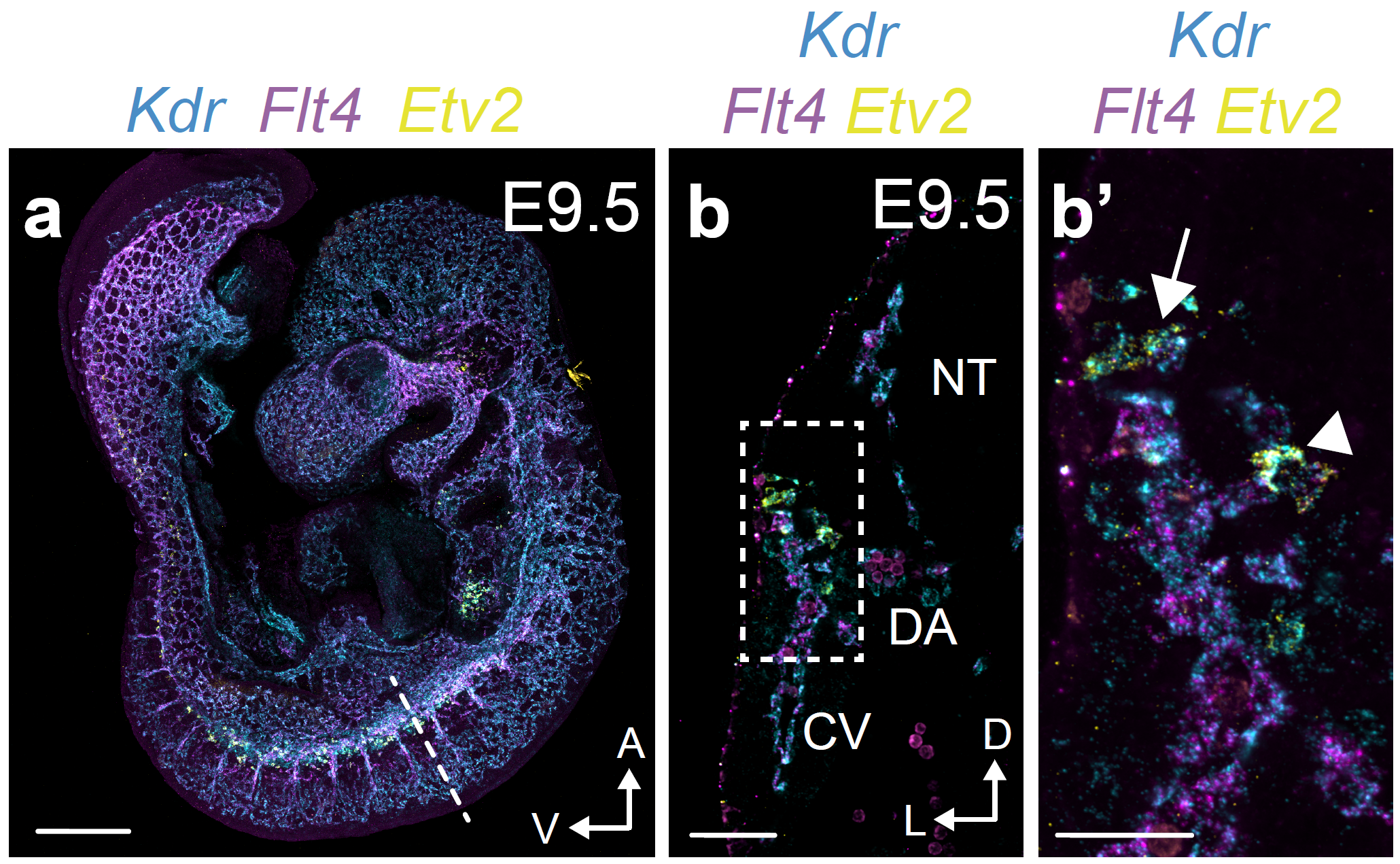Written by
The MI Team
New research from the Stone Group at the University of Oxford has redefined our understanding of how lymphatic endothelial cells are formed, revealing that they can emerge from specialized progenitors rather than through the transdifferentiation of venous endothelium. Using HCR™ technology, the team visualized endothelial progenitors co-expressing key regulators. Its flexibility and robustness allowed for high-resolution imaging of mouse embryos, reducing the need for additional sample types. This groundbreaking approach provides fresh insights into the molecular pathways that shape vascular development, offering a deeper dive into how distinct progenitor populations contribute to endothelial diversity.
David Grainger, a postdoctoral research scientist at the Institute of Developmental and Regenerative Medicine, explained, "During formation of the vertebrate vasculature, endothelial cells were traditionally thought to emerge from a common pool of progenitor cells that diversify through iterative steps of differentiation to form subtypes of vessels. Our research challenges this view, showing that mammalian lymphatic endothelial cells are derived from a specialized population of lymphatic progenitors."

Using cutting-edge single-cell genomics and lineage tracing, Lupu et al. identified paraxial mesoderm-derived progenitors that directly differentiate into lymphatic endothelial cells. Further analysis of lymphatic migration and genetics confirmed their findings, emphasizing the role of unique mesenchymal progenitors in generating specialized endothelial subtypes.
Through their research, Grainger spoke on how HCR™ technology allowed the team to validate their scRNA-seq analysis and visualize endothelial progenitors co-expressing master regulators of endothelial (Etv2) and lymphatic (Prox1) fate specification. He shares that the "HCR™ technology was bright enough for us to stain and image whole-mount mouse embryos and robust enough to allow us to perform vibratome sectioning and re-image the sections from the same embryos." This extensive research powered by the HCR™ platform enabled the team to extract valuable spatial and molecular insights from each precious embryo, shedding new light on endothelial progenitor dynamics and their role in vascular development.
